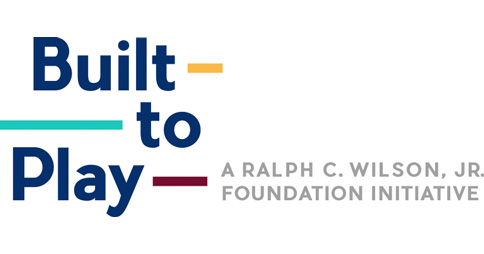Every community has a story to tell, whether it’s a historical account of times long past, or an evolving tale of what once was—and what can still be.
The story of Mount Clemens, Michigan is rooted in flowering growth and discovery. In 1880, the area was recognized as the rose capital of the United States, with 10 of the country’s major cultivators, and more than 30 acres of plants flourishing under glass. Around this same time, increased development in the area resulted in the uncovering of valuable mineral waters, which turned the city into a health spa hot spot, full of residents and visitors keen on soaking in the region’s valuable resource. This also earned Mount Clemens a memorable nickname: Bath City.
In recent years, the area has dealt with the civic struggles associated with any small city, including declining population and lack of engaging public gathering spots that can invigorate neighborhoods and instill community pride. But despite these challenges, Mount Clemens’s past provided an opportunity to cultivate a welcoming spot in its still family-friendly downtown, all while telling its story to a new generation of residents.
Enter Advancing Macomb, a community support organization within Mount Clemens’s host Macomb County. Working with local voices that represented the city’s artists, youth and history, they aimed to create a striking public space off the nearby Clinton River to reawaken memories of the Bath City in a way that engages kids and families and supports active walkability. In 2018, their collaboration produced the ambitious concept for “Let It Flow, Mount Clemens,” an interactive, 3-D art installation now pulling the curtain back on a community’s history—and providing a preview of its artistic potential.
“As with so many cities in the region and around the country, the city is reinventing itself through creativity and innovation,” said Diane Banks, Executive Director of Advancing Macomb. “‘Let It Flow, Mount Clemens’ celebrates the unique history of the city while embracing public art as a catalyst for revitalization.”
The project was enabled through funding made possible by the 2019 Play Everywhere Design Challenge. Established by KABOOM!, and supported by the Ralph C. Wilson, Jr. Foundation through its Built To Play initiative, the Play Everywhere Challenge has devoted more than $1 million annually since 2018 to turn everyday spaces into unconventional play spaces across Southeast Michigan and Western New York. The next edition opened for entries on July 13, 2020, and enables applicants to transform corners of their communities with creative expanses.
Advancing Macomb’s executive director knows what kind of effect these spaces can have, and in the below Q&A, she provides details about the importance of creatively telling your city’s story and what this year’s applicants need to know before applying.
Question: How did the idea of telling the story of Mount Clemens through “Let It Flow, Mount Clemens” come together?
Diane Banks: We wanted to incorporate the city’s history of being “Bath City” and its location adjacent to the Clinton River. While we used that as the foundation, we allowed the artists to decide how to best tell the story while incorporating learning and play. We were overwhelmed by the amazing ideas of the artists, and actually had a very hard time narrowing it down to the selected ideas. We hope to find a way to incorporate some of the other ideas in the future.
Q: How has engagement in this story impacted the community since the opening of the art installation in 2019?
DB: This project has helped residents feel a sense of pride in the character of their city and allowed them to envision the connection these murals inspire as essential to the future of the city. The installations are now a must-see destination in the city and have played a role in increased foot traffic in the walkable downtown. A space that was once avoided is now a popular place to hang out, and the murals even have their own Facebook fan page.
Q: What does this project reveal about a community’s ability to enhance their history and vitality through interactive art?
DB: In cities like Mount Clemens, the past and present often collide. Changing demographics and challenging economic conditions can push people even further apart. Interactive art like “Let It Flow, Mount Clemens” creates a positive narrative about both the city’s history and future. It appeals to both the nostalgic and the hopeful when residents see their city through a playful lens.
Q: If you could offer three tips to those planning to submit applications for the next Play Everywhere Challenge, what would they be?
DB: My tips would be:
- Bring as many voices to the table as possible. Find a way to make the project educational and fun, but also appealing to those more interested in nostalgia. Consider a partnership with other organizations that can help with this process—and don’t forget to ask kids what would be fun!
- Find a location that is neglected, but strategic. Doing so allows residents to think they are discovering a new part of town where everyone wants to be.
- Get participation and buy-in from building or business owners closest to the project. This will ensure that the project is highlighted and well maintained into the future.
